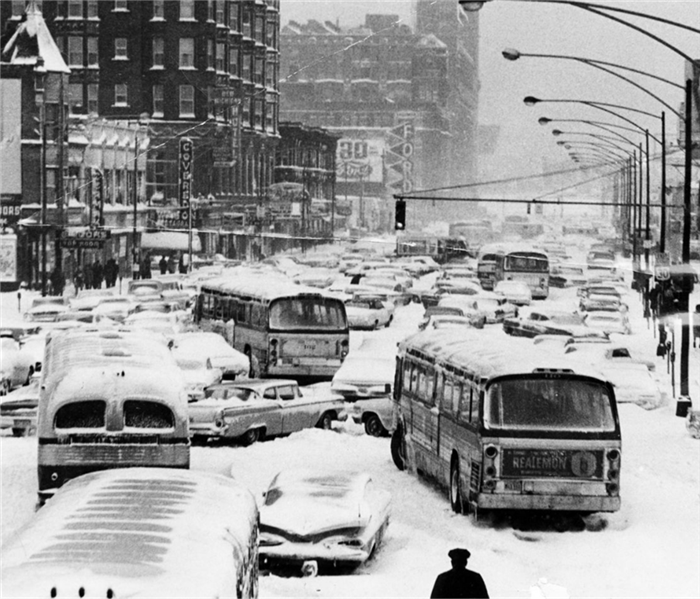The Deadly Chicago Winter Blizzard of 1967
1/7/2022 (Permalink)
 26 people had died and businesses lost an estimated $150 million, about $904 million in today’s currency!!
26 people had died and businesses lost an estimated $150 million, about $904 million in today’s currency!!
Chicago experienced its greatest snowstorm on record on January 26 and 27, 1967. The snow began around 5:02 a.m. on the 26th, and by 10:10 a.m. on the 27th, the city had been crippled by a record 23 inches of snow.
Winds gusted to 53 mph at Midway Airport during the storm. The strong winds generated a lot of blowing and drifting. Drifts of 4 to 6 feet high were found all over the area.
Snow began falling on Thursday morning, January 26th, but many people were able to go to work and school without difficulty. However, by noon, about 8 inches of snow had fallen, and O'Hare Airport had been closed.
Employees and kids have been released early from certain companies and schools. But even for those who got out early, the trip home was a misery. Many workers failed to return home or arrived late. Many people choose to stay at work or in motels. The city had come to a halt by Friday morning.
By the time it stopped snowing, 26 people had died and businesses had lost an estimated $150 million (about $904 million in today’s currency).
When a winter storm warning is issued, there is little or no time to prepare, making it more difficult to ensure safety. Check out the suggestions below for what to do depending on where you are during the alert.
At Home or in a Building:
- Stay inside
- Close off unneeded rooms to save heat
- Stuff towels or rags in cracks underneath doors to conserve heat
- Cover the windows at night
- Eat and drink to prevent dehydration
- Wear layers of loose-fitting, light-weight and warm clothing
If Caught Outside:
- Find a dry shelter immediately
- Cover all exposed body parts
If Caught Outdoors Without Shelter:
- Prepare a lean-to, windbreak, or snow-cave for protection against the wind
- Build a fire for heat and attention purposes
- Place rocks around the fire to absorb and reflect the heat
- Do not eat snow straight off the ground, melt it first.
If Stranded in a Vehicle:
- Stay inside your vehicle
- Run the motor for ten minutes each hour
- Crack the windows to avoid carbon monoxide poisoning
- Make sure the exhaust pipe is not blocked
- Tie a colored cloth to your antenna or door
- Raise the hood after the snow stops falling
- Exercise to keep warm and keep your blood flowing




 24/7 Emergency Service
24/7 Emergency Service